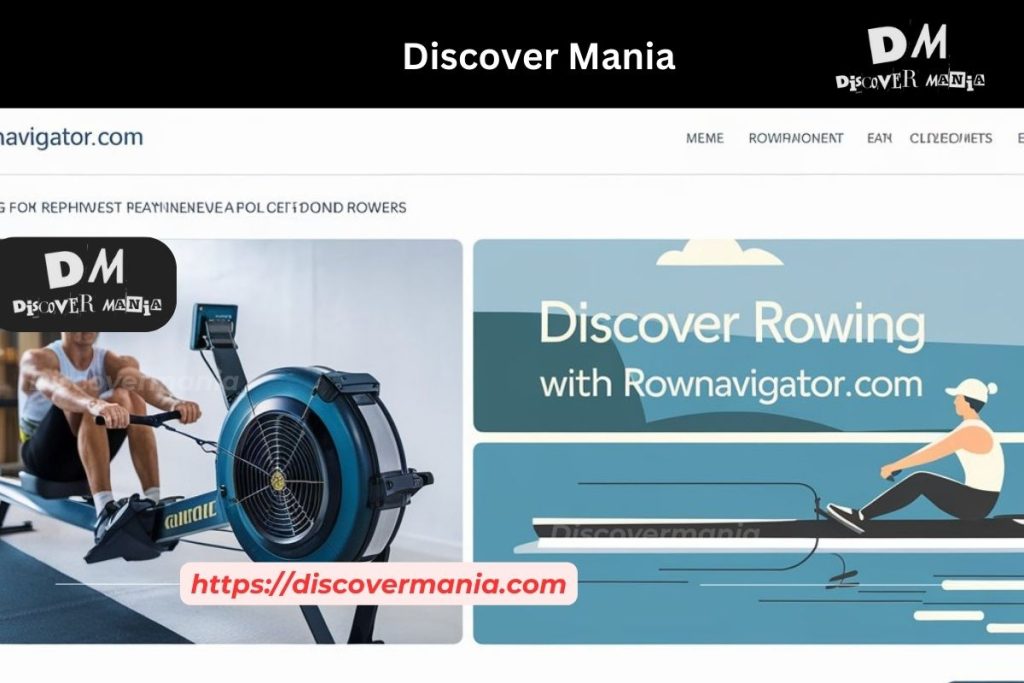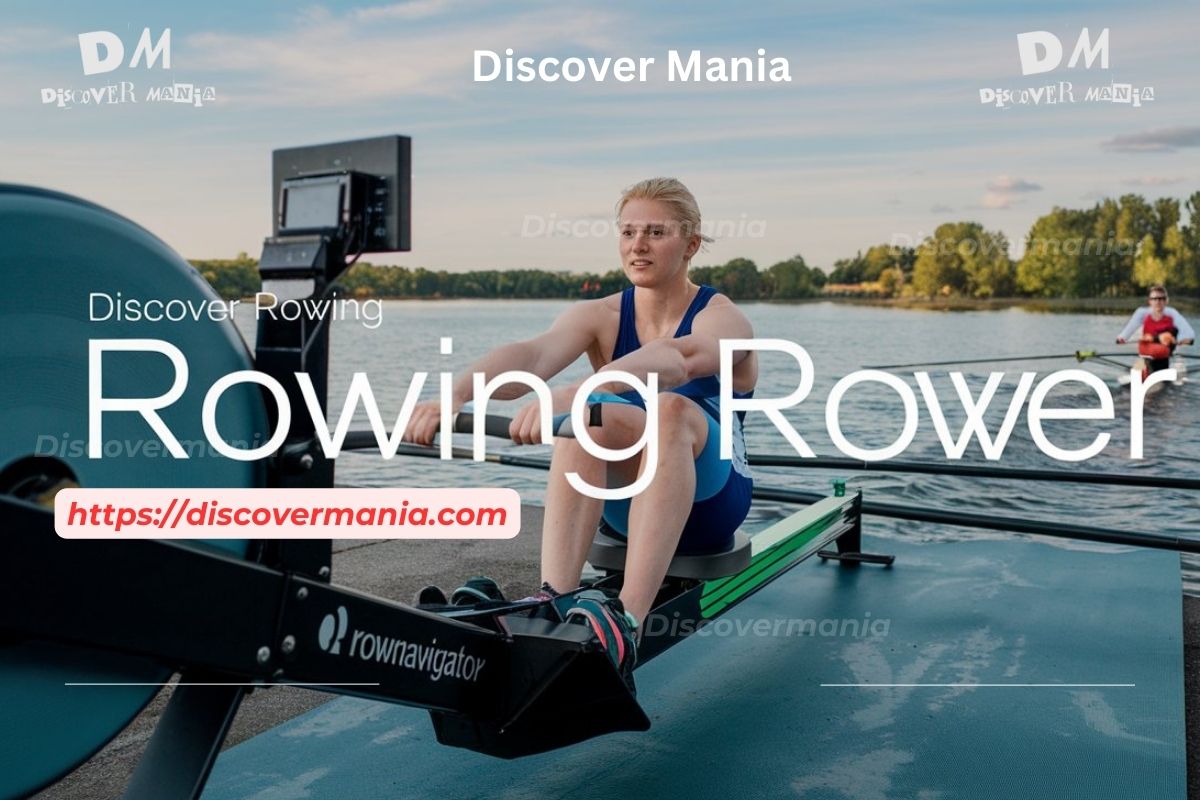Rowing is more than just a sport—it’s a powerful, full-body workout that combines strength, endurance, and technique. Whether you’re training for competition or looking for a new way to stay fit, Rownavigator.com is your go-to resource. This platform is packed with everything you need to know about rowing, from beginner advice to advanced training strategies, all presented in simple, easy-to-understand terms.
In this article, we’ll take a closer look at what Rownavigator.com offers and why it’s the ultimate tool for anyone interested in rowing.
Table of Contents
What Is Rownavigator.com?
Rownavigator.com is an all-in-one platform designed for rowing enthusiasts. Whether you’re just starting your rowing journey or you’re an experienced rower aiming to improve, this website offers a range of useful content. From step-by-step guides to tips on perfecting your form, Rownavigator.com covers all aspects of rowing, making it accessible to people of all skill levels.
One of the standout features of Rownavigator.com is its extensive database of rowing techniques, equipment reviews, and safety tips. The platform is regularly updated with new content, ensuring that rowers stay informed about the latest trends and developments in the sport.

Why Rowing? Benefits Explained by Rownavigator.com
Rowing isn’t just for athletes or water sports enthusiasts. It’s one of the best full-body exercises, providing numerous health and fitness benefits. Here’s what Rownavigator.com highlights as the key benefits of incorporating rowing into your routine:
1. Full-Body Workout
Rowing works almost every muscle in your body. Your legs, core, back, and arms are all engaged in a single stroke, making it one of the most efficient exercises for building strength and stamina.
2. Low-Impact Exercise
Unlike running or other high-impact sports, rowing is gentle on the joints. This makes it a great option for people who want a tough workout without the risk of injury from repetitive stress.
3. Cardiovascular Benefits
Rowing helps improve heart health by increasing your heart rate and building cardiovascular endurance. It’s a great way to get your blood pumping while also toning muscles.
4. Stress Relief
The repetitive, rhythmic nature of rowing can be incredibly soothing, helping to reduce stress and promote mental clarity. Plus, rowing outdoors offers the added benefit of being surrounded by nature, which further enhances relaxation.
Beginner’s Guide to Rowing
Starting a new exercise can be intimidating, but Rownavigator.com offers a simple and effective guide for beginners to help you get started with confidence.
Understanding Rowing Strokes
Rownavigator.com breaks down the basic rowing stroke into four key phases:
- The Catch: In this phase, your arms are extended forward, and your knees are bent. This is the starting position where the oar or handle is ready to pull.
- The Drive: Push with your legs while pulling the handle toward your body. Keep your back straight and engage your core.
- The Finish: Your legs are now extended, and the handle is pulled close to your chest. Lean slightly back while keeping your posture upright.
- The Recovery: Straighten your arms, bend your knees, and glide back to the starting position to complete the stroke.
Common Mistakes for Beginners
- Over-Gripping: Beginners often hold the handle or oars too tightly, leading to unnecessary strain. Relax your grip and focus on smooth, controlled movements.
- Rushing: It’s common to speed up your strokes when starting. However, rowing requires balance and precision, so take your time and perfect your form before increasing speed.
- Incorrect Posture: Always maintain a straight back and engaged core to avoid injuries.
Advanced Techniques and Tips
Once you’ve mastered the basics, Rownavigator.com offers advanced techniques to take your rowing to the next level. These tips are designed for rowers who want to improve their efficiency, strength, and overall performance.
1. Power Strokes
Power strokes focus on maximizing the force you apply during the drive phase. These are great for building strength, especially in your legs and core.
- Tip: Concentrate on driving with your legs and keeping your movements strong and fluid. Power strokes are all about strength, not speed.
2. Sprint Intervals
Interval training involves alternating between periods of high-intensity rowing and lower-intensity recovery. This type of workout helps build endurance and improves cardiovascular fitness.
- Example: Row at maximum effort for 30 seconds, then recover for 1 minute. Repeat for 20 minutes.
3. Endurance Rows
Longer rowing sessions at a moderate pace are perfect for building stamina and improving aerobic capacity. Rownavigator.com suggests maintaining a steady, controlled rhythm throughout the row.
Rowing Equipment You’ll Find on Rownavigator.com
Rowing equipment plays a critical role in ensuring you get the most out of your workout. Whether you’re rowing indoors on a machine or out on the water, Rownavigator.com provides detailed recommendations for the best gear available.
Indoor Rowing Machines
Indoor rowers are a great way to practice your technique and build fitness year-round. Rownavigator.com reviews various types of rowing machines, including:
- Air-Resistance Rowers: These machines simulate the feel of rowing on water, with resistance based on your rowing speed.
- Water-Resistance Rowers: These models use water tanks to create resistance, offering a smooth, realistic rowing experience.
- Magnetic Rowers: These machines provide adjustable resistance levels, making them ideal for users of all fitness levels.
Popular models reviewed on Rownavigator.com include the Concept2 Model D, WaterRower, and Sunny Health & Fitness SF-RW5515.
Rowing Boats
For those who prefer outdoor rowing, Rownavigator.com offers reviews and comparisons of rowing shells (boats). These lightweight vessels are designed for speed and efficiency on the water.
Top brands include Hudson, WinTech Racing, and Filippi.
Oars and Paddles
Choosing the right oars can greatly impact your rowing experience. Rownavigator.com provides advice on selecting the right size, material, and design for your oars.
Indoor vs. Outdoor Rowing: Which is Better?
A common question for rowing enthusiasts is whether indoor rowing on a machine or outdoor rowing on the water is more effective. Both have their unique benefits, and Rownavigator.com offers insights to help you decide.
Indoor Rowing
- Advantages: Weather doesn’t affect your workouts, and you can row at any time. Rowing machines also allow for adjustable resistance, making them suitable for all fitness levels.
- Disadvantages: You miss out on the outdoor experience, and some rowers find the repetitive nature of indoor rowing less engaging.
Outdoor Rowing
- Advantages: Outdoor rowing provides a more immersive experience, allowing you to enjoy nature while you work out. It also offers more variety, as the water conditions can change each time.
- Disadvantages: You need access to a body of water, and weather conditions can limit your ability to row outdoors.
Rownavigator.com suggests incorporating both into your routine for a balanced approach.
Safety Tips for Rowing
Whether you’re rowing indoors or outdoors, safety is paramount. Rownavigator.com emphasizes the importance of following safety guidelines to prevent injury and ensure a smooth, enjoyable experience.
Indoor Rowing Safety Tips
- Warm-Up: Always spend at least 5-10 minutes warming up before rowing to prepare your muscles and reduce the risk of injury.
- Correct Form: Maintaining proper posture is key to preventing strain on your back and knees. Keep your back straight and engage your core throughout the workout.
- Hydration: Drink plenty of water, especially during longer sessions, to stay hydrated.
Outdoor Rowing Safety Tips
- Wear a Life Jacket: Always wear a life jacket when rowing on water, especially in open water or unpredictable conditions.
- Check Weather Conditions: Be aware of weather changes, including wind speeds and rain, before heading out.
- Stay Visible: If rowing in low-light conditions, use reflective gear and lights to ensure visibility to other boats.
Community Insights and Testimonials
One of the strengths of Rownavigator.com is its active community of rowers. The website includes a section for testimonials and reviews from users who have benefited from the platform’s advice.
Customer Reviews
- “I had never rowed before, but Rownavigator.com made it so easy to get started. Their beginner guides were simple and straightforward, and I feel so much more confident now.” – Sarah P.
- “As someone who has been rowing for years, I found the advanced tips incredibly helpful. The site is well-organized and easy to navigate.” – James L.
These real-life experiences provide valuable insights and encouragement for new and experienced rowers alike.
Frequently Asked Questions (FAQs)
Q1: Is Rownavigator.com good for beginners?
Yes! Rownavigator.com offers plenty of beginner-friendly tutorials and guides to help you start rowing with ease.
Q2: Can I use Rownavigator.com for advanced rowing techniques?
Absolutely! The platform has a wealth of content designed for advanced rowers, including tips on improving technique and performance.
Q3: How often should I row to see results?
Rowing 3-4 times per week for 30-60 minutes can lead to noticeable improvements in your fitness and strength.
Q4: Is rowing good for weight loss?
Yes, rowing is a highly effective exercise for burning calories and promoting weight loss.
Conclusion
Whether you’re new to rowing or an experienced athlete, Rownavigator.com provides all the resources you need to succeed. From beginner tutorials to advanced tips, equipment reviews, and safety guidelines, this platform is designed to support your rowing journey every step of the way.





